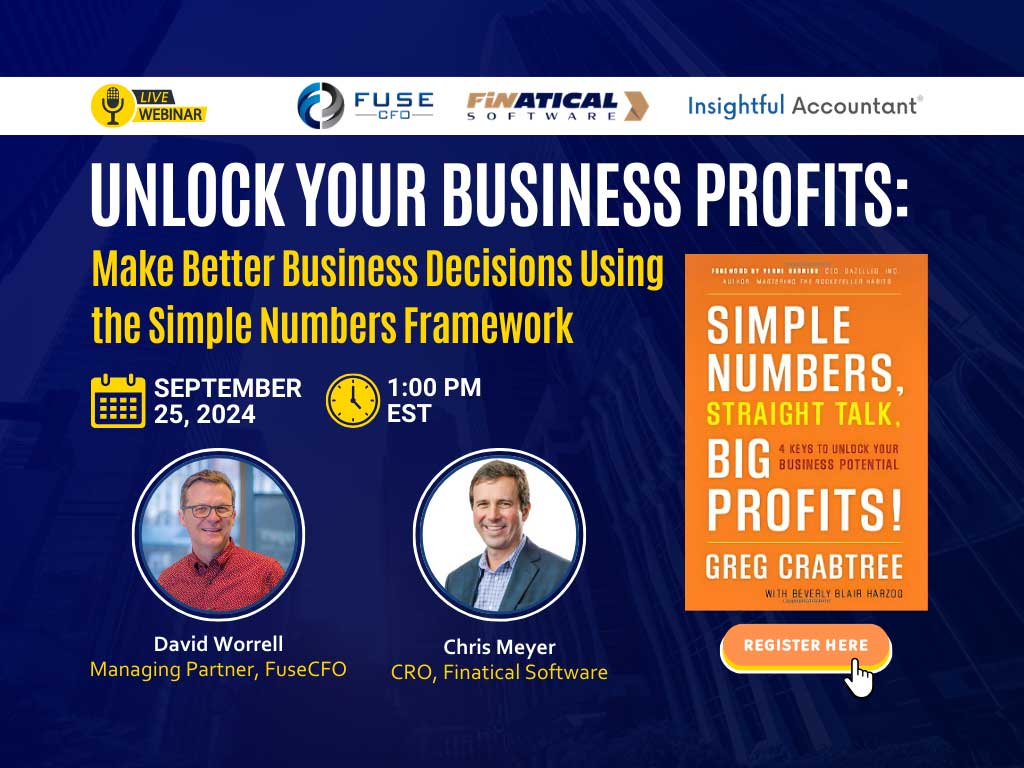
How Should I Develop a Pricing Strategy for Products & Services?

No one wants to undervalue themselves, but they also don’t want to set a price that will drive them out of business. Many small business owners are left with the question: Am I charging enough for my products & services? A well-thought-out pricing strategy is essential to balance profitability and market competitiveness.
Many business owners use what I like to call the Laugh Test, which means they continually raise prices until their client base walks away laughing.
But, there’s a more refined art to pricing than this trial-and-error method. Let’s explore the nuances of smart pricing strategies that meet market demands and ensure your business’s profitability and growth.
Market-Driven Pricing
Smart pricing means listening closely to what the market is telling you. Assess the market’s tolerance. Market-driven pricing requires thorough market research regarding the amount the market will bear, what your customers are willing to pay, and what your competition is charging.
The answer to these factors allows you to gauge customer willingness to pay and understand your market. This leads to setting competitive pricing to align with customers’ expectations.
It forms a foundation for a strategy that is both competitive and profitable. Finding that sweet spot where your pricing strategy aligns with market expectations and customer satisfaction is key.
COGS-Driven Pricing
COGS is a common abbreviation for Cost of Goods Sold. COGS-driven pricing means you charge enough to cover all the variables that go into your product or service.
This includes obvious items like raw materials and labor but also less-than-obvious costs like gasoline for deliveries or the time your staff spends traveling to a client’s location.
Understanding all of your variable costs in detail is a prerequisite for setting your prices.
Backbone of Your Pricing Strategy
But COGS isn’t the only consideration: A solid pricing strategy covers the cost of goods sold (COGS) and a contribution towards overhead expenses. The pricing formula is:
Price = COGS + (Overhead / Average Volume) + Profit.
This formula ensures that you’re not just breaking even but also making a profit.
Once you understand your cost structure, create an easy-to-remember pricing formula. An example is the 25/25/25/25 pricing model, I once used in a golf club manufacturing company. In this case, the price of the golf clubs included 25% each for COGS, sales costs, overhead, and (of course) profit.
Formulating the best pricing formula depends on your current overhead burden. For example, in a service business like accounting, you might aim for a 40/30/30 model, where 40% of the hourly rate covers the accounting labor, 30% goes toward overhead, and 30% is reserved for net profit.
This model helps you ensure that your pricing covers all variable costs, overhead, and salary and still leaves room for profit.
Psychological and Strategic Considerations in Pricing
But pricing is not just a number game; it’s deeply rooted in psychology. The way customers perceive your pricing can significantly influence their buying decisions. Price too low, and you risk undervaluing your offering; price too high without justifying the value, and you might deter potential buyers.
Dynamic pricing, which involves adjusting prices based on market trends and changes in cost structure, can be an effective pricing strategy in a market where demand fluctuates over time.
Smart pricing is about more than finding the highest price the market will bear. It’s about understanding the complex interplay between market demands, cost structures, and strategic positioning.
Whether you’re pricing products or services, the principles remain the same: know your costs, understand your market, and price confidently.
FuseCFO
Refining your pricing strategy is an ongoing process. At FuseCFO, we can help you understand market trends, cost analysis, and strategic pricing. We’re here to help you develop a pricing strategy that covers your costs and creates profitability that aligns with your business objectives.
We’re not just about crunching numbers. We’re here to guide you through every aspect of financial strategy. So, if you’re ready to take your pricing strategy to the next level, schedule a free business analysis with us. Let’s work together to ensure your pricing covers your costs and maximizes your profits.







